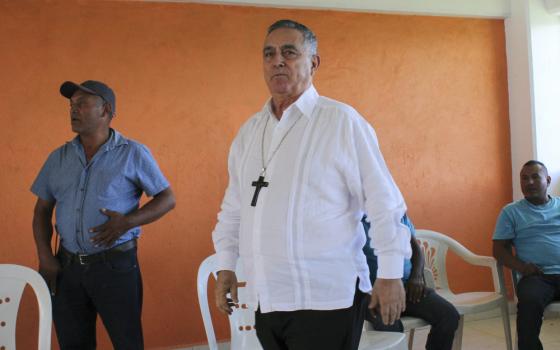Send your thoughts to Letters to the Editor. Learn more
A Benedictine monastery in North Dakota has introduced the use of wind power  in a coal-producing state. A Dominican women's community in Western Kansas sponsors a large organic vegetable growing and animal raising enterprise, Heartland Farm. A Catholic project in New Mexico is cited for its use of straw-bale construction and solar energy. The 80-acre campus of St. John’s University in rural Minnesota has introduced a 250-year sustainable rotation of thinning and harvesting of their extensive forests. The monks there have managed the land since 1979 with a goal to restore biodiversity in both flora and fauna. They are planning a 150-acre wetland, savanna, and prairie restoration project. A task force is establishing a native habitat arboretum that will embrace the entire property. The monks offer land ethic outreach to the local community.
in a coal-producing state. A Dominican women's community in Western Kansas sponsors a large organic vegetable growing and animal raising enterprise, Heartland Farm. A Catholic project in New Mexico is cited for its use of straw-bale construction and solar energy. The 80-acre campus of St. John’s University in rural Minnesota has introduced a 250-year sustainable rotation of thinning and harvesting of their extensive forests. The monks there have managed the land since 1979 with a goal to restore biodiversity in both flora and fauna. They are planning a 150-acre wetland, savanna, and prairie restoration project. A task force is establishing a native habitat arboretum that will embrace the entire property. The monks offer land ethic outreach to the local community.
Catholic religious communities of women and men have historically created new patterns of leading moral and sustainable lives. As in the above examples, many religious communities are developing sustainable ways of living and forming innovative relationships with Creation.
The National Catholic Rural Life Conference Web site hosts a database of religious communtiies practicing sustainability or preserving their land for conservation purposes. This section highlights "best practices" and offers ideas for others to adopt these practices as well. Contact information is included.



